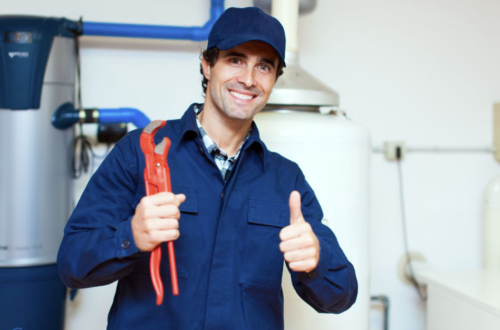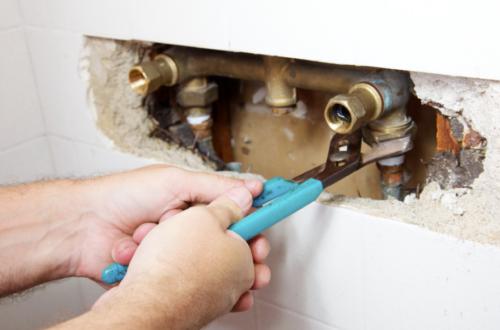10 Common Bathroom Plumbing Problems and How to Fix Them
Introduction
Bathrooms are essential spaces in our homes, but they are also prone to various plumbing issues. From leaky faucets to clogged drains, these problems can disrupt our daily routines and cause frustration. In this article, we will discuss the ten most common bathroom plumbing problems and provide practical solutions to fix them. Whether you are a DIY enthusiast or prefer to call a professional, this guide will help you understand and resolve these issues effectively.
1. Leaky Faucets
Leaky faucets are not only annoying but can also waste a significant amount of water over time. The most common cause is a worn-out washer or cartridge within the faucet. To fix this problem, turn off the water supply, disassemble the faucet, and replace the faulty component. If you are unsure or uncomfortable with this task, it’s best to contact a licensed plumber to ensure the job is done correctly.
2. Clogged Drains
Clogged drains can occur due to a buildup of hair, soap residue, or other debris. To unclog a drain, start by using a plunger to create suction and dislodge the blockage. If that doesn’t work, try a drain snake or a mixture of baking soda and vinegar. If the clog persists, it may require professional assistance to avoid causing further damage.
3. Running Toilets
A running toilet can waste a significant amount of water and inflate your utility bills. The most common cause is a faulty flapper valve or a damaged fill valve. To fix this problem, you can adjust the chain length, clean or replace the flapper valve, or replace the entire fill valve assembly. If you are unsure about the process, consulting a plumber is recommended.
4. Low Water Pressure
Low water pressure in your bathroom can make showering and handwashing frustrating. The issue might be due to mineral buildup in the aerator, a partially closed shut-off valve, or a problem with the water supply line. Start by cleaning the aerator and checking the shut-off valve. If the problem persists, it’s advisable to seek professional help to diagnose and resolve the underlying cause.
5. Dripping Showerheads
A dripping showerhead not only wastes water but can also be irritating. The problem usually arises from a worn-out washer or a faulty valve. To fix this issue, you can disassemble the showerhead, clean it thoroughly, and replace any damaged components. If the problem persists, consider replacing the entire showerhead for better performance and water efficiency.
6. Faulty Water Heater
Having no hot water in your bathroom can be quite inconvenient, especially during the colder months. Common causes of a faulty water heater include a tripped circuit breaker, a broken thermostat, or a sediment buildup in the tank. First, check the circuit breaker and reset it if necessary. If that doesn’t work, consult a professional plumber to inspect and repair the water heater.
7. Leaking Pipes
Leaking pipes can lead to water damage and costly repairs if left unresolved. The most common causes are corrosion, loose fittings, or high water pressure. If you notice a leak, shut off the water supply immediately. Depending on the severity of the leak, you may need to tighten fittings, apply a patch, or replace a section of the pipe. For complex leaks or extensive pipe damage, it’s best to hire a professional plumber.
8. Malfunctioning Toilet Flusher
A malfunctioning toilet flusher can be frustrating and may result from various issues. The chain might be tangled or too loose, the flapper valve may be damaged, or there could be an issue with the fill valve. Start by adjusting the chain length and cleaning or replacing the flapper valve. If the problem persists, consulting a professional plumber is advisable.
9. Smelly Bathroom Drains
Unpleasant odors emanating from bathroom drains are often caused by a buildup of bacteria, mold, or debris. To eliminate the smell, you can try pouring a mixture of hot water, vinegar, and baking soda down the drain. Additionally, regularly cleaning your drains and using drain screens can help prevent future odor issues.
10. Jammed Garbage Disposal
If your bathroom has a garbage disposal unit and it gets jammed, you can attempt to fix it before calling a professional. First, ensure the power is off, and then use an Allen wrench to manually rotate the flywheel and dislodge any obstructions. If the problem persists, consult a plumber to avoid damaging the disposal unit.
FAQs
Q: When should I hire a professional plumber?
A: While some minor plumbing issues can be fixed by homeowners, it’s advisable to hire a professional plumber for complex problems, major leaks, or when you lack the necessary knowledge or tools.
Q: How can I prevent clogged drains?
A: To prevent clogged drains, avoid disposing of large amounts of hair or solid materials down the drain. Additionally, regularly clean your drains using a mixture of baking soda and vinegar.
Q: How often should I clean my bathroom drains?
A: It’s recommended to clean your bathroom drains once a month to prevent buildup and unpleasant odors. Regular maintenance can help avoid costly repairs in the future.
Q: Can I fix a water leak on my own?
A: Small leaks with visible sources can sometimes be fixed by homeowners. However, if you are uncertain about the cause or unable to locate the leak, it’s best to consult a professional plumber to prevent further damage.
For more information on bathroom plumbing problems and their solutions, check out this comprehensive guide on our website.






